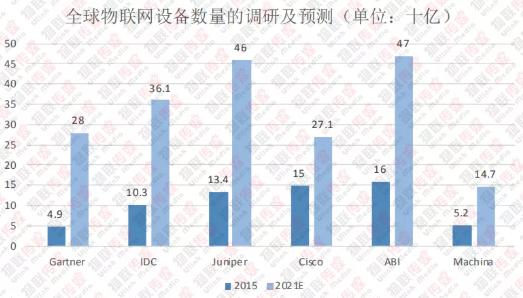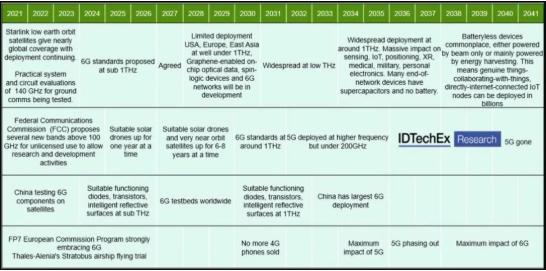Call Us Now
+8615914489090

For
most people, the perception of OPPO may stay in the "stereotype"
impression of smartphone terminals. As everyone knows, on the IoT track,
OPPO has gone a long way. From the application field, the layout of
smart wear, smart home, etc.; from the technical point of view, the
application of 5g, uwb and other technologies is also at the
forefront.... ..
Just recently, the OPPO Research Institute
officially released the "Zero Power Communication" white paper. Based on
the current unmet IoT communication needs, it explained the technical
positioning and development prospects of zero power communication
technology in detail for the first time.
The so-called zero power
consumption refers to the use of key technologies such as radio
frequency energy harvesting, backscattering, and low-power computing in
zero-power communication technology. The zero-power communication
obtains energy by collecting radio waves in the space to drive the
terminal to work, so the zero-power communication terminal may not use
conventional batteries. Further, backscattering and low-power computing
technologies can be used to enable the zero-power terminal to implement
extremely simple radio frequency and baseband circuit structures,
thereby greatly reducing the terminal cost, size and circuit power
consumption of the terminal.
Therefore, zero-power communication is
expected to realize battery-free terminals and meet the IoT
communication requirements of ultra-low power consumption, extremely
small size and extremely low cost. It is precisely based on the
excellent characteristics of terminals that are battery-free, these
terminals are called zero-power terminals, and the corresponding
communication process is called zero-power communication.
Based on this concept, it can be seen that this is exactly what we know as passive IoT.
Initial optimistic IoT endpoint scale forecast
And behind the continuously downward data
A
very interesting phenomenon. In the past few years, many well-known
research institutions in the world have very optimistic forecasts on the
number of Internet of Things connections. The following figure is
compiled based on the research and forecast data of major institutions
on the number of devices:

If
this projected volume is reached, it also means that powering the IoT
revolution could require a corresponding 41.6 billion batteries to keep
these IoT devices collecting, analyzing and sending data. And this will
simultaneously trigger a huge logistical challenge.
Although
stimulated by the huge market, it has indeed achieved growth and
explosion in recent years, but in fact, the overall deployment scale of
IoT devices is still far below expectations and plans. The growth rate
is also slowing down year by year.
However, the scale development of
IoT terminals is not as good as expected. To a certain extent, it is
inseparable from the problems of the power supply scheme behind it,
which makes it impossible to fully meet the actual application
scenarios. The main manifestations are: system risks, maintenance costs
and labor costs caused by power supply problems continue to High,
limited use places, not conducive to the implementation of the dual
carbon policy, complicated wiring, etc.
Therefore, a large part of
IoT terminals need a new and sustainable power supply solution, and
passive IoT is the root of the problem, because passive IoT can achieve
energy self-sufficiency and extremely low maintenance costs and very low
cost of ownership.
The passive IoT market pattern is gradually becoming larger
The
research on passive IoT is still in the early stage. The weak and
unstable energy from the environment and the randomness of energy
acquisition in nodes make the connection of passive IoT nodes relatively
fragile and it is difficult to maintain continuous connectivity. It
restricts the application of passive IoT.
Nevertheless, a large
number of enterprises at home and abroad are still working hard. RFID is
currently the most widely used and mature passive Internet of Things
application, and the current passive communication technology
represented by RFID tag has problems such as short communication distance,
high cost, and the need for additional radio frequency sources. Special
applications such as low-cost and high-capacity logistics and
warehousing scenarios, low-cost and low-power smart homes, and extremely
small-sized wearables still face great challenges.
In the near
future, IoT devices will be able to obtain energy directly through
Bluetooth, WiFi, and mobile phone signals, so as to achieve the effect
of smaller size, longer life and lower cost.
In addition to RFID, the
application of passive Internet of Things is relatively small.
Previously, we have summarized the situation of some companies that can
query the information. The addition of OPPO has ushered in a new column
in this table:
|
Company |
Technology | Product Description |
| Huawei | proposed a 5.5G-oriented passive IoT vision, hoping that the 5G network can incorporate passive IoT, and the exploration of 5G passive IoT has begun. | No Information |
| Every open technology | By building the "ANIOT" cloud platform by itself, under the connection of existing Bluetooth and WiFi active wireless communication technologies, it took the lead in launching the world's first passive NFC communication module. | The company's module products have been applied to various IoT fields such as smart locks, smart packaging, smart labels, smart measurement and smart charging. |
| Flyingst | Core technology passive + ultra-low power edge intelligence | Wireless switches, passive wireless smart smoke detectors, passive indoor environment monitoring nodes, passive outdoor micro-nano nodes (temperature and humidity, gas monitoring, illuminance), TEG industrial monitoring nodes, self-powered AI cameras, etc. These products have been piloted in multiple scenarios such as parks, hotels, and factories in Chengdu and surrounding areas, and a business line for C-end consumer electronics products has also been laid out for online e-commerce platforms. |
| Chengyue Technology | Based on the self-developed ALLN protocol, it collects various forms of energy such as sound, light, heat, and force in the environment and human activities, converts it into electrical energy, and supplies power for low-power electronic products or systems (such as sensors, control device, etc.), so that the product and system can be used "permanently". | It mainly produces smart home products such as smart lighting and smart electricians, and provides smart whole-house solutions. At present, it has four product lines of smart home, smart lighting, smart electrician and smart security, and has completed the mass production of 40 smart home products covering 20 categories, including battery-free wireless switches, on-off switches, doorbells with doorbell receivers , SOS button with security gateway, low-light version of the door and window magnetic, temperature and humidity sensors and other categories. |
| Wiliot | Through a tiny antenna, the energy of the Bluetooth signal in the environment is collected to power the sensor | Passive Bluetooth sensor tags, tags cost around 10 cents and can be produced with a printer. |
| Atmosic | Atmosic claims to be working on three major technologies: ultra-low power radio frequency, radio frequency wake-up and controlled energy harvesting. Among them, the former is to realize the ultra-low power consumption radio frequency function on the Bluetooth 5 platform; the second technology is to provide two sets of sensing systems for the radio frequency, light sleep mode and deep sleep mode; the purpose of the latter is to ensure the function is stable and available, while maximizing the Reduce device and system reliance on battery power. | At present, there are two Bluetooth chip products, among which the M3 series products comprehensively apply these three technologies to support operation without batteries. At present, the company's products have been used in medical, wearable devices and other fields. |
| OPPO | At present, OPPO has successfully built a zero-power communication system and completed the principle verification of zero-power communication technology. In addition to technical self-research, OPPO also, as a major standard promoter, took the lead in proposing research proposals for zero-power communication in the international standards organization 3GPP, and successively expounded the concept of zero-power communication technology in academic conferences such as the FuTURE Forum and ICCC, and provided communication support for communication. Industry ecological contribution. | No Information |
| Haobo Hi-Tech | Focusing on the research of Bluetooth BLE and micro-energy harvesting technology, we have specially set up Weineng Technology to provide various battery-free solutions. Battery-free and maintenance-free product solutions. | Products have been widely used in the Internet of Things, indoor positioning and navigation, security, smart agriculture, smart parks, factory logistics, smart homes, remote controls, wearables, medical monitoring and other fields. |
Global Thinking Shift:
From making more energy to using less,
Utilize ambient energy
5G
services are far beyond the overall needs of mobile phones and even
personal electronics, and this will be even more the case with 6G.
Thing-to-thing communication may be more important than human
communication.
There has also been a fundamental change in global
thinking today, from a previous passion for making more energy to using
less energy and utilizing the energy of the surrounding environment,
hoping to bring the battery-free perspective to future IoT applications.
Take
Next G Alliance, an organization developing 6G in North America as an
example. It focuses on R&D, manufacturing, standardization and
marketing, and actively formulates a 6G national roadmap to establish
core priorities for 6G technology. It is known from public information
that the organization is also adding passive features to its 6G planning
route.
Previously, the "2021-2041 6G Communication Market, Equipment
and Materials" report released by IDTechEx predicted the 6G roadmap and
some challenges and opportunities.

(2021-2041 6G Roadmap)
At present, a variety of 6G candidate communication technologies have received extensive attention in the industry. As a new type of communication technology, passive IoT is expected to be deeply integrated with other 6G candidate technologies. Perhaps we can also look forward to seeing some battery-free 6G IoT terminals with the application of 6G in the future.